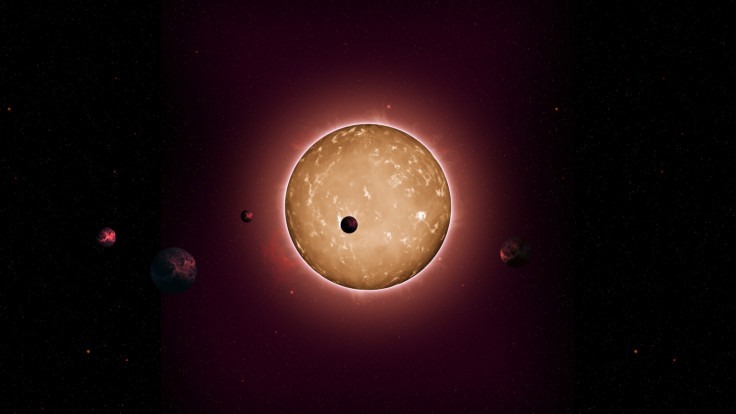Planets as old as the universe 'could point to extremely advanced alien civilisations'

Five Earth-sized planets that are almost as old as the universe have been discovered orbiting the Sun-like star Kepler-444.
The discovery marks a breakthrough in our understanding of when planets formed in the early universe – and what alien life could be like had it evolved on these primitive worlds.
Published in The Astrophysical Journal, researchers announced Kepler-444 was formed 11.2 billion years ago – when the universe was just 2.6 billion years old – and is the oldest known system of terrestrial sized planets in the Milky Way.
In comparison, our sun is 4.6 billion years old, while the Earth is 4.54 billion.
The five planets Kepler-444 hosts are all between the sizes of Mercury and Venus and are located 117 light years away. While they are extremely unlikely to be habitable, the findings confirm Earth-sized plants formed throughout most of the universe's history.
"A few years ago, we thought planets this small would not be able to form around very old stars because very old stars lack or have very small proportion of heavy elements and you need heavy elements to produce rocky planets," lead author Tiago Campante, from the University of Birmingham's School of Physics and Astronomy, told IBTimes UK.
"Now we have observational confirmation that planets this small - rocky planets, planets that in principle can harbour life - can form around very old stars with a lack of heavy elements.
"Although life as we know it would not be able to develop on this particular system because the five planets are very close to the star, it doesn't mean that other systems exist as old as this one that could potentially harbour life."
The implications of this mean intelligent life could, in theory, have had a very long time to evolve – far longer than that of Earth.
Classification of civilisations
Campante said there is a classification of civilisations made up of three types. We just about belong to the first, in that we are able to harness resources from our own planet.
The second involves a civilisation extracting resources from the planet's star. He said: "Type two would be more advanced technologically. We are not there yet, we are far away from reaching that point." Type three would be able to colonise their galaxy, he added.
Campante said: "This is speculation of course. But imagine there are civilisations out there with a head start of five billion years. The human race has been here for 50,000 years. It's a huge difference.
"There's an analogy. It's like you have some ants living by the side of the road and humans are building a highway next to them. How can you explain to those ants what that highway means? You cannot. We could be those ants and there could be advanced civilisations living just next to us, but we cannot detect them and cannot not understand their ways. We don't have the means or intellect."
In a statement, he added: "There are far-reaching implications for this discovery. We now know that Earth-sized planets have formed throughout most of the Universe's 13.8 billion year history, which could provide scope for the existence of ancient life in the Galaxy."
© Copyright IBTimes 2025. All rights reserved.






















